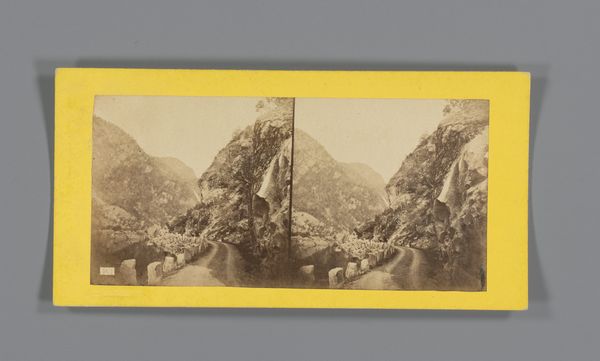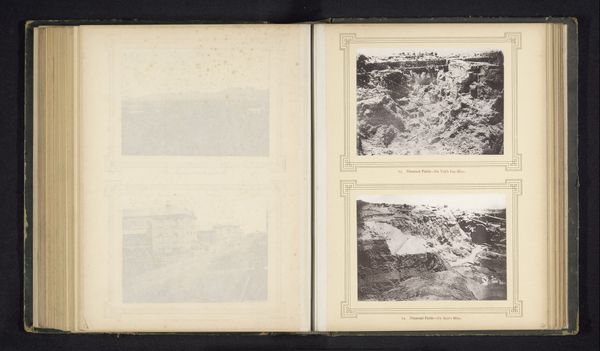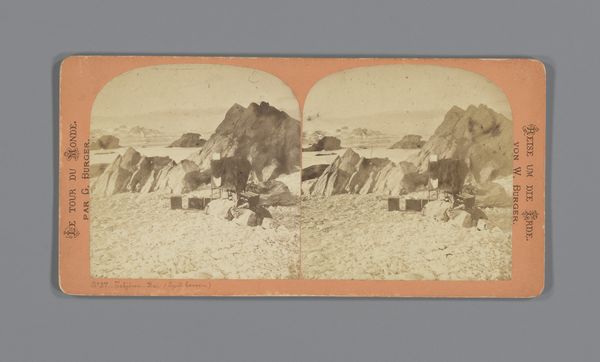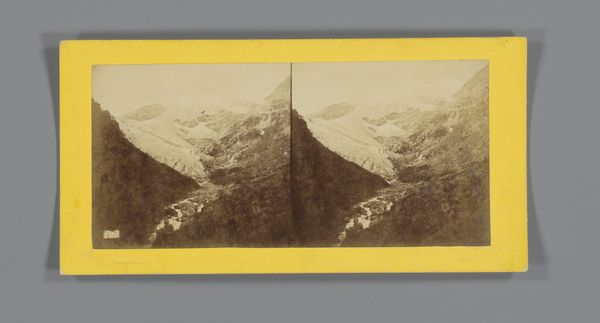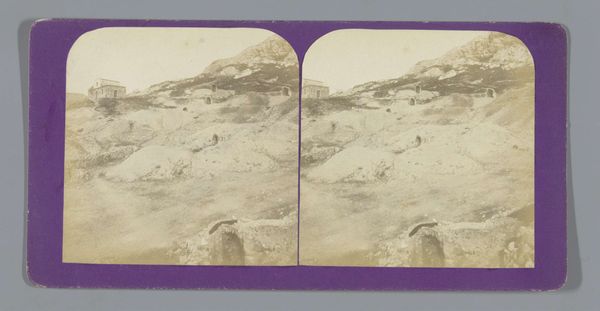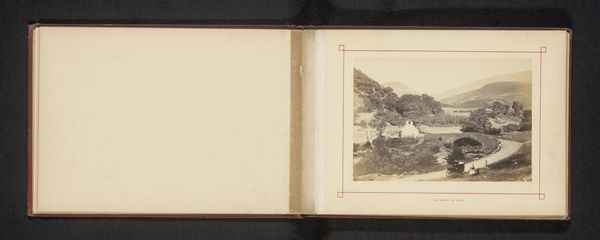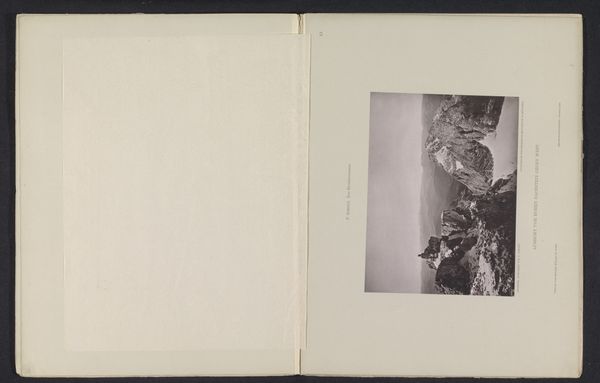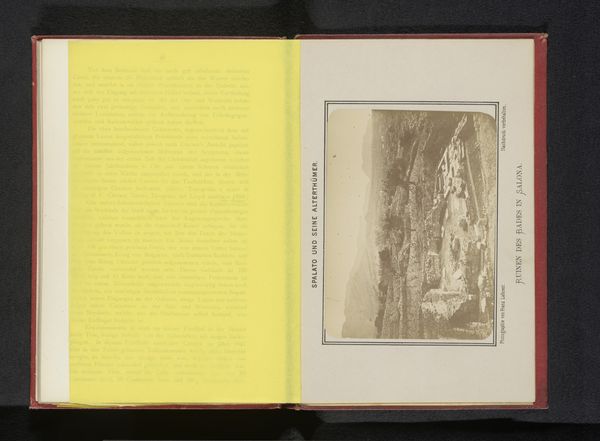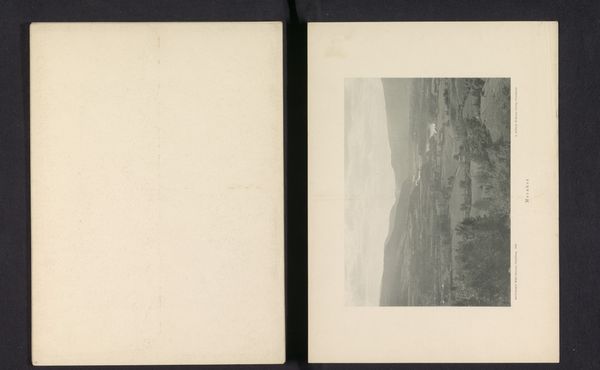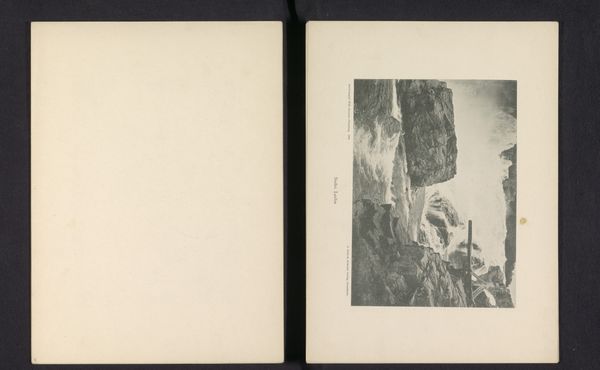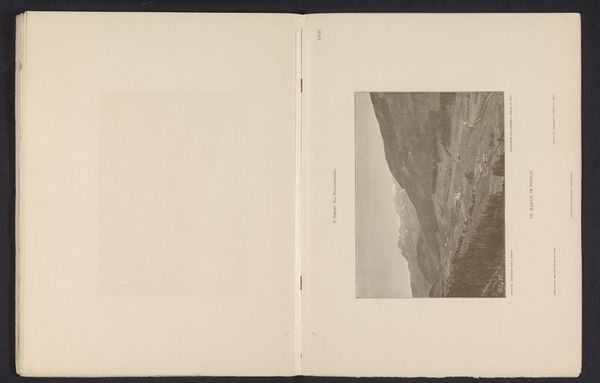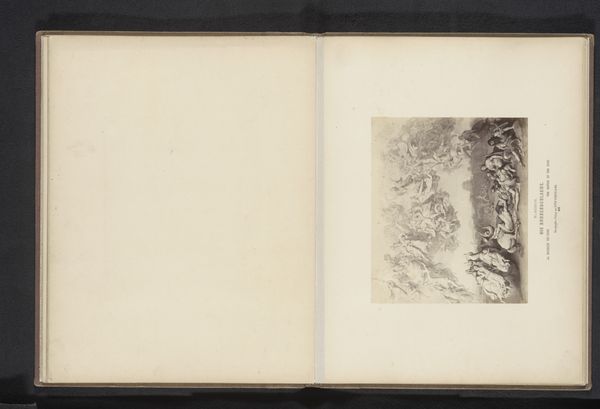
Dimensions: height 86 mm, width 177 mm
Copyright: Rijks Museum: Open Domain
Editor: Here we have "View of a Bridge in Hønefoss, Norway", taken between 1865 and 1870 by Per Adolf Thorén, using a gelatin silver print, presented as a stereoscopic card. I'm struck by the dynamism; the water looks almost alive in the photograph. What grabs you when you look at it? Curator: Alive, exactly! It’s less a capture and more an evocation. For me, I'm captivated by the tension Thorén creates between the untamed, roaring river and the rather rigid, man-made bridge. Notice how the bridge is almost engulfed by the churning water; there's a humbling of human intervention by the force of nature. What do you make of the doubled perspective in this stereoscopic form? Editor: I suppose it intensifies that sense of being present, almost immersed in the scene? Is that something that would have been a conscious decision at the time, given the relatively new medium? Curator: Absolutely. Early photography was often about replicating, and even amplifying, the experience of ‘being there.’ Think of it as a Victorian-era VR headset. Thorén’s choice encourages a visceral, almost romantic, response to the Norwegian landscape. Do you think that bridge, which might have symbolized progress or connection, seems dwarfed, insignificant even? Editor: Now that you mention it, definitely. I was so focused on the water itself. Curator: Exactly! The power of nature reclaiming a tiny portion. Editor: I never considered that perspective before. Thanks, that's been a splash of insight! Curator: The best art always changes our view, doesn't it? It was an immersive joy, let's say.
Comments
No comments
Be the first to comment and join the conversation on the ultimate creative platform.
